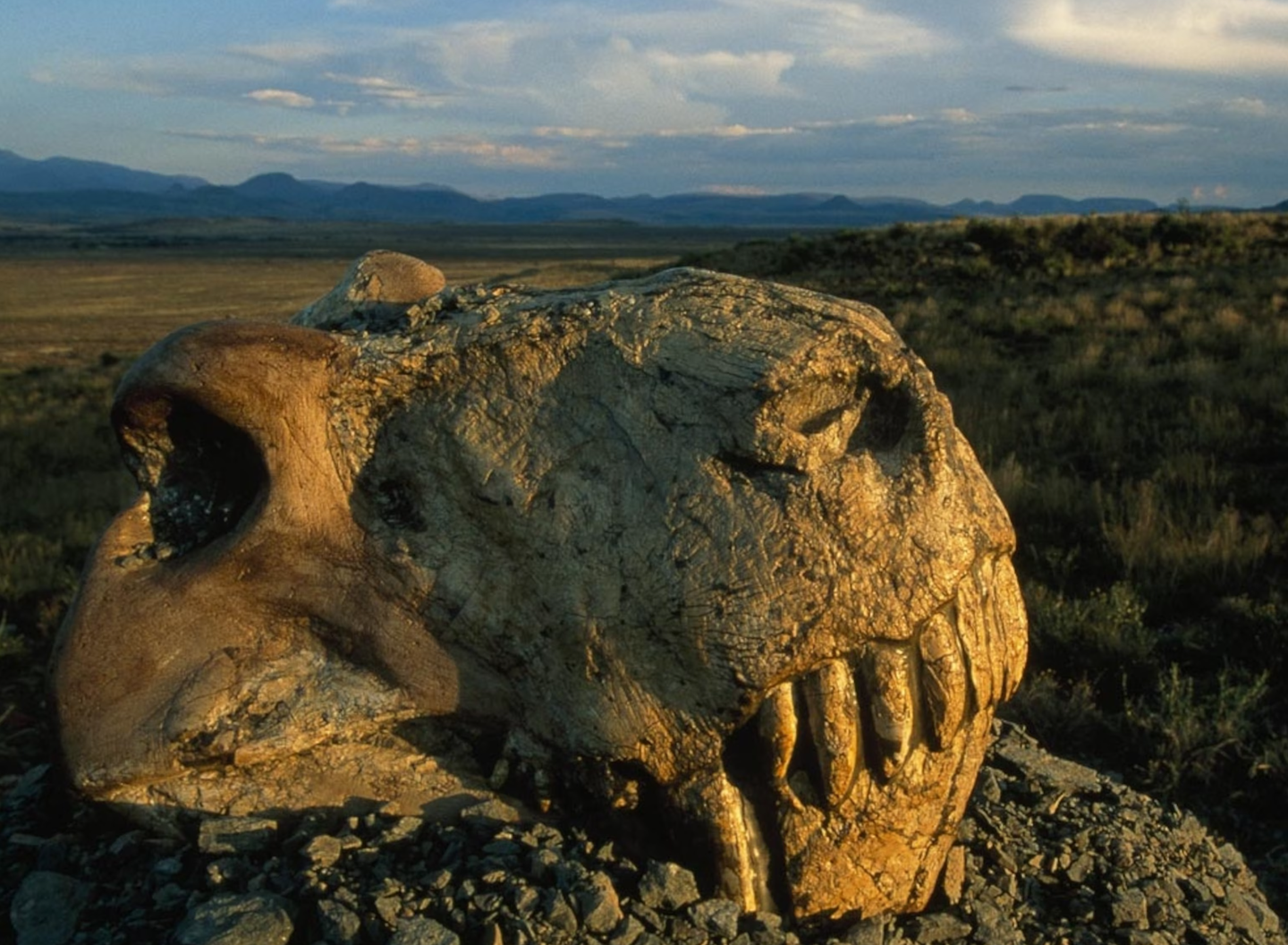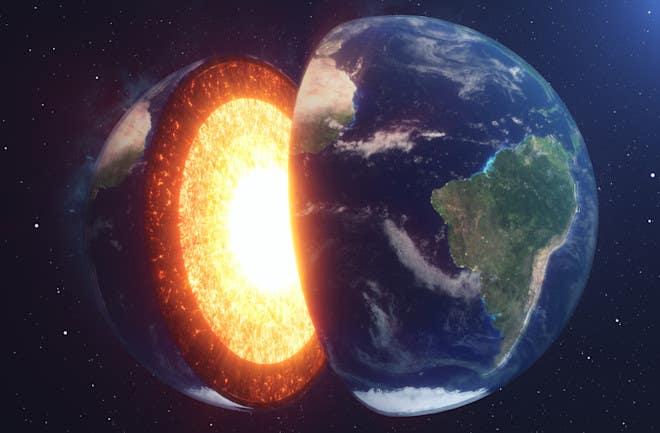Mega-El Niño caused Earth’s largest ever mass extinction, study finds
Research reveals that mega-El Niño events 252 million years ago contributed to the largest mass extinction on Earth, driving extreme climate shifts and devastating life in oceans and on land

El Niño events played a pivotal role in the largest extinction event on Earth, which occurred around 252 million years ago.(CREDIT: Jonathan Blair/National Geographic Creative)
New research reveals that mega ocean warming El Niño events played a pivotal role in the largest extinction event on Earth, which occurred around 252 million years ago.
The findings, published in Science by a team co-led by the University of Bristol and China University of Geosciences (Wuhan), highlight how rapid climate changes contributed to the mass extinction during the Permian-Triassic period.
Scientists have long associated this catastrophic event with massive volcanic eruptions in what is now Siberia. These eruptions released enormous amounts of carbon dioxide, accelerating climate warming. This chain of events caused widespread ecosystem collapse, both in the oceans and on land. However, the factors behind the devastating impact on terrestrial life, including plants and insects, which are typically more resilient, have remained unclear.
Dr. Alexander Farnsworth, Senior Research Associate at the University of Bristol and co-lead author of the study, explains that climate warming alone couldn’t fully account for the severe extinctions. "As we are seeing today, when the tropics become too hot, species often migrate to cooler, higher latitudes. Our research has shown that increasing greenhouse gases do more than just raise global temperatures—they also heighten weather and climate variability, making conditions far more unpredictable and difficult for life to endure."
This suggests that the Permian-Triassic extinction wasn’t just about intense heat. It was the extreme swings in climate over decades that made survival so difficult. Dr. Farnsworth points out, “Most life failed to adapt to these conditions, but thankfully some species did survive—without them, we wouldn’t be here today. It was almost, but not quite, the end of life on Earth.”
Key insights into the climate of this era were uncovered by studying fossilized tooth material from conodonts, tiny extinct marine creatures. The researchers used oxygen isotope analysis of conodont fossils to reconstruct temperature records across various regions. The results revealed a collapse in temperature gradients across the lower and mid-latitudes.
Related Stories
Dr. Farnsworth’s climate modeling confirmed that global temperatures became too high almost everywhere. "The changes we observed were driven by much more intense and prolonged El Niño events than those we experience today," he notes.
Modern species faced challenges in adapting to the rapid shifts in climate. El Niño events, though shorter in duration now, still lead to major disruptions. For instance, the El Niño of 2024 caused a heatwave across North America with temperatures spiking by around 15°C higher than normal. That year also ranks among the hottest on record globally, exacerbated by human-induced CO2 emissions, which drove extreme droughts and wildfires worldwide.
Co-author Professor Paul Wignall from the University of Leeds explains how different the situation was during the Permian-Triassic period. “Today’s El Niño events last only one to two years, but during the crisis 252 million years ago, these mega-El Niños persisted for much longer. A decade of drought would be followed by years of flooding, making it nearly impossible for species to adapt to such chaotic conditions.”
The team’s climate modeling sheds light on why mass wildfires became so common during this period. The abundant charcoal deposits found in the rock layers from that time are evidence of these intense fires. Professor David Bond, a palaeontologist at the University of Hull and co-author of the study, adds, "The Earth was stuck in a crisis state. With widespread droughts causing wildfires and stagnant oceans, life had very few safe places left to thrive."
The researchers compared the Permian-Triassic extinction to other volcanic events throughout Earth’s history. While other eruptions caused significant environmental stress and extinction events, none came close to the magnitude of the Permian-Triassic extinction.
What made this event unique was the positive feedback loop created by the mega-El Niños. As temperatures climbed, vegetation began to die off. Plants play a critical role in absorbing carbon dioxide from the atmosphere, and their loss meant that CO2 levels continued to rise unchecked.
This feedback loop also helps clarify the timeline of extinctions during the Permian-Triassic crisis. Terrestrial extinctions occurred tens of thousands of years before marine extinctions. While ocean ecosystems initially withstood the temperature rise, the extreme El Niño conditions on land pushed temperatures beyond the tolerance of most species.
As Dr. Yadong Sun, co-lead author from China University of Geosciences, explains, "Land temperatures became so extreme that most species couldn’t adapt in time. Only those that could migrate quickly had any chance of survival, and there were very few species capable of that."
Mass extinctions, although devastating, are a natural part of Earth’s evolutionary reset. Each mass extinction paves the way for new life to emerge and dominate. Dr. Farnsworth reflects on this cyclical nature: “The Permian-Triassic mass extinction, while catastrophic, led to the rise of dinosaurs as the dominant species. Similarly, the Cretaceous mass extinction paved the way for mammals, including humans, to eventually take over.”
The study underscores the fragile balance of Earth’s ecosystems and the far-reaching impacts of climate instability. Understanding how past events like the Permian-Triassic extinction unfolded offers valuable insights into the challenges we face with today’s climate change.
Note: Materials provided above by The Brighter Side of News. Content may be edited for style and length.
Like these kind of feel good stories? Get The Brighter Side of News' newsletter.
Joshua Shavit
Science & Technology Writer | AI and Robotics Reporter
Joshua Shavit is a Los Angeles-based science and technology writer with a passion for exploring the breakthroughs shaping the future. As a contributor to The Brighter Side of News, he focuses on positive and transformative advancements in AI, technology, physics, engineering, robotics and space science. Joshua is currently working towards a Bachelor of Science in Business Administration at the University of California, Berkeley. He combines his academic background with a talent for storytelling, making complex scientific discoveries engaging and accessible. His work highlights the innovators behind the ideas, bringing readers closer to the people driving progress.



